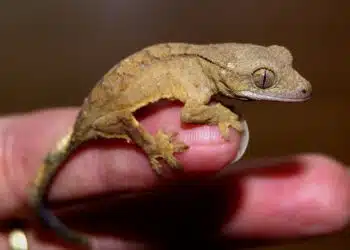Leaf Sheep: The Adorable Sea Slugs You Won’t Believe Are Real
Leaf sheep also known as Costasiella Hiroshima are wondrous sea creatures which would make you gaze in wonder at their uniqueness and artistic design. It is difficult to explain what these sea slugs are and look like because they seem more like creations of some parallel universe, not of this world, and they do live in the ocean. Due to the cute appearance and the similar body shape to a sheep wearing leaves on it, they are given many names to call, including Leaf Slugs as well as Sea Sheep. This strategic style is not just for a ‘look,’ but is essential for their needs as a species. It may also be important to note that besides their aesthetic value, which is in line with our first argument, Leaf Sheep also possesses some marvelous biological features. In this article, we will look into the details provided by Discord users about Leaf Sheep. Here, you learn some of the most interesting facts about their appearance, the areas these slugs are found, what they feed on, and other amazing characteristics that make them intriguing creatures. In the following section, we will find out about the specifics of their existence in the ecosystem and their importance in the marine world. By the end of this journey, you shall learn why the natural scientists regard the Leaf Sheep as one of Mother Nature’s most fascinating works of art.

1. What Are Leaf Sheep?
Leaf Sheep, scientifically known as Costasiella kuroshimae, are a unique species of sea slug. These tiny creatures belong to the sacoglossan clade. Simply, it is a group of sea slugs known for their plant-like appearance and interesting feeding habits.
Also known as the Bunny Slug, Sea Sheep, and the insipid-sounding Leaf Slug, the monikers of this species are whimsical. There are three names that are mentioned commonly and the most common one is ‘Leaf Sheep’ because these sea slugs look like little sheep that are covered in leaves.
Among the maps, one could identify the locations of finding the Leaf Sheep – Japan, the Philippines and Indonesia. They are so called due to their roots being traced back to the isle of Kuroshima, in the country of Japan. These sea slugs attract visitors due to their bright green colour and the Ctenobranch structures that resemble small plant leaves.
Perhaps the most relevant fact about the origins of Leaf Sheep is that they possess the unique trait of photosynthesis. The chloroplasts of the algae can be ingested, it means that the algae’s chloroplasts can be stored in their cells. This extraordinary ability is called kleptoplasty, it gives parasites the same possibility to produce energy from the sunlight like plants do it. This adaptation not only colors their body green but also gives them an added source of energy which none of the terrestrial animals possess. Having a naturalist appearance of a leaf they are scientifically classified as sea slug with many odd features that make them so interesting. They have been discovered and studied more to give much information on the great biodiversity of the marine ecosystem and the capabilities of living organisms to evolve.
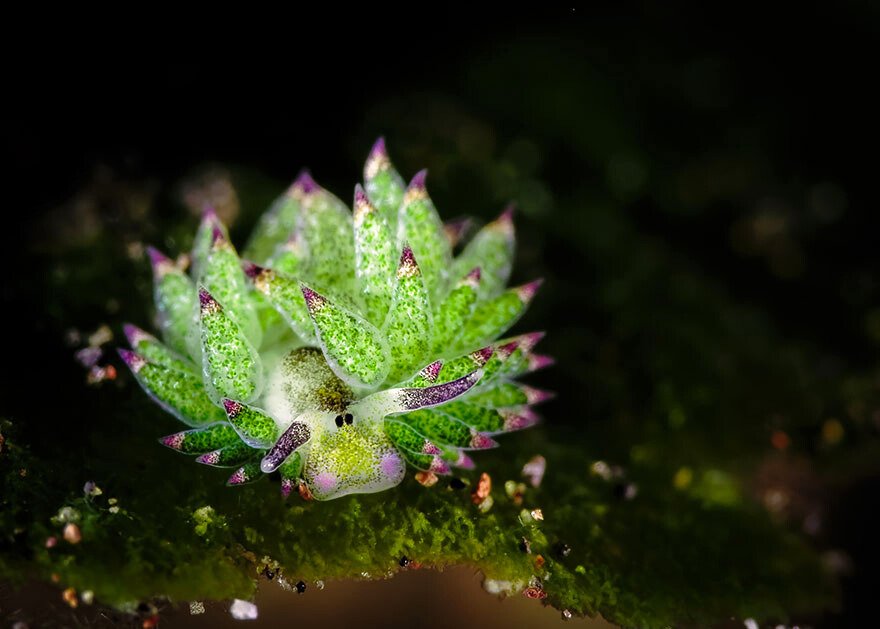
2. Physical Appearance
The size of the Leaf Sheep is relatively small. They avoid growing large and only reach a maximum size of 5 millimeters in length. However, with a small size, they give very beautiful impressions that are noticeable. They are mostly green in colour to camouflage their bodies to suit the environment they exist in. This green colour is brought about by the chloroplasts taken from the algae that these animals engulf.
However, one of the most distinctive features of Leaf Sheep is the numerous leaf-like structures, called cerata, that cover their backs. These cerata look like leaves, and the shrimp’s thereby shaped like a sheep with leaves, hence the name: Leaf Sheep. Cerata are frequently ventrally pigmented pink or white on their tips to contribute much of their brightness.
Leaf Sheep get their name because these cerata look like the wool of a sheep. When viewed closely, their round, flat faces and tiny black eyes give them an appearance similar to that of a cartoon sheep or bunny. This cute, whimsical look is why they are sometimes called Bunny Slugs or Sea Sheep.
This fur is not only aesthetic, it is a necessity in their lives, a means to live and survive in the wild. Here, the leaf-like structures referred to as cerata assist them in feeding on algae as they have a good chance of escaping predators due to the camouflage ability this part of their body offers. This mimicry enables them to camouflage themselves, with added challenges to conventional predators that may want to apprehend them.
Moreover, while some of them secrete algae they still contain chloroplasts which not only gives them the green colouration, they also help them perform photosynthesis. This process enables them to produce energy from requite as plants do. This specific adaptation allows them to have an extra energy loaded molecule, which is vital in places with little nutrients.
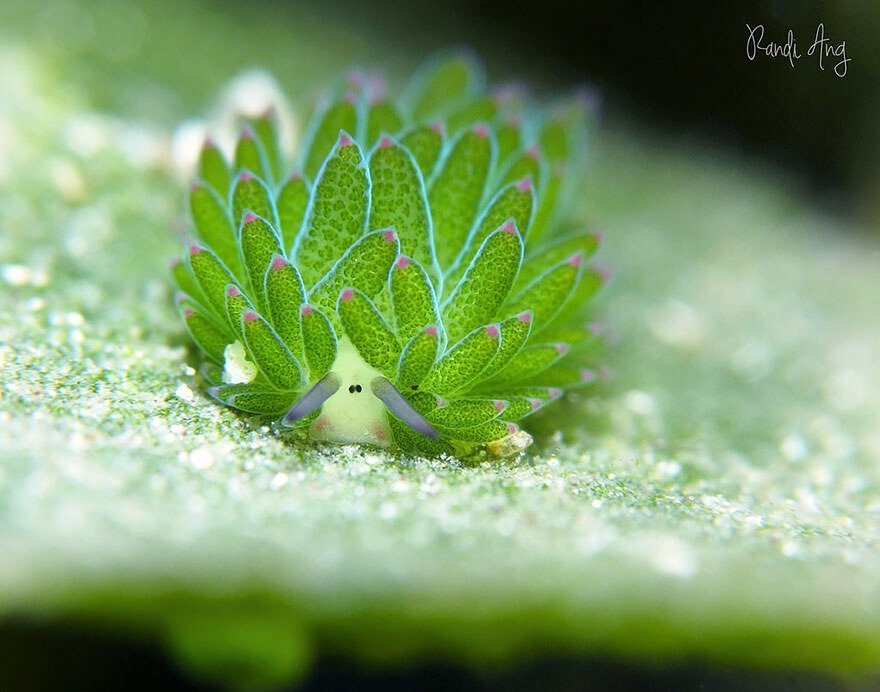
3. Habitat and Distribution
It is important to note that a majority of the Leaf Sheep are discovered in waters of the Indo-Pacific region. And they are found in waters near Japan, Philippines and Indonesia. These areas are perfect for the accommodation of Leaf Sheep.
These sea slugs are most appropriately found in habitats that are full of algae since this is their chief diet. They prefer to live in coral reefs and seagrass like those in Logo and the wider Tafate area. These habitats provide them with sources of algae or food well supply, and shelters to fend off from the predators. With regard to coloration, these two components of natural habitat,: algae-infested reefs and seagrass meadows are an added bonus since they serve as excellent camouflage.
Leaf Sheep are known to inhabit areas with warm temperate ocean atmospheres. Some of the factors that are needed to sustain are; water temperatures, water quality, and other environ-mental inputs. It is an ideal refrigerator for Leaf Sheep to range between 24 to 28 Centigrade degrees or 75 to 82 Fahrenheit degrees. Special nutrients such as fresh and clean water is crucial for their feeding because when the water is contaminated the algae they feed are affected thus affecting them.
In addition, leaf Sheep are found in the warm, tropical waters of the Indo-Pacific region. They thrive in algae-rich environments like coral reefs and seagrass beds, where they can blend in and find ample food. Maintaining stable water temperatures and good water quality is crucial for their survival.
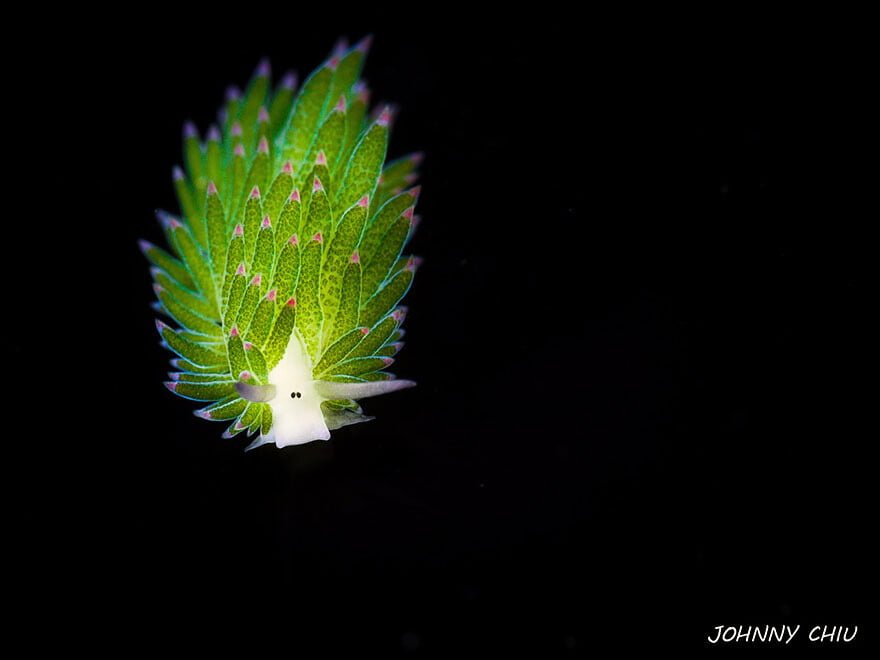
4. Diet and Feeding Habits
Leaf Sheep have a fascinating diet that sets them apart from many other sea creatures. Their primary food source is algae. They graze on various types of algae, especially those found in their habitats, like coral reefs and seagrass beds.
One of the most remarkable aspects of Leaf Sheep is their unique method of feeding, which resembles photosynthesis. When Leaf Sheep eat algae, they don’t just digest it. Instead, they retain the algae’s chloroplasts, which are the structures responsible for photosynthesis. This process is known as kleptoplasty.
The choice of kleptoplasty enables Leaf Sheep to utilize the chloroplasts of the eaten sea animals in the same way as plants. It is by using solar light to obtain energy. This implies that the organization called the Leaf Sheep will be able to generate its own power supply from the sun for photosynthesis aside from the feed. They are also endowed with the facultative anaerobic ability that enables them to colonize in locations where food may be hard to come by, therefore being able to adapt into nutrient-limited areas.
This is the reason they feed on algae and undergo a unique physiological process known as kleptoplasty in their morphology. The retained chloroplasts help to make the body vivid green leaving the middle part slightly grey giving the appearance of tiny leaves hence the name Leaf Sheep. These green colours aid in camouflaging the animals in spots enriched with algae and plant matter, thus making it almost impossible for predators to locate them.
This is an area where we can learn a lot about Leaf Sheep, their physiology and their diet in particular, the main source of which are algae. Kleptoplasty is the method by which they can use the raw power of photosynthesis for their own potential energy source apart from food and this lends them the green hue. So, this adaptation is of much importance to their existence and rightfully makes them an interesting and unique species in the whole of the seas.
5. Unique Features and Adaptations
Leaf Sheep are truly unique among sea slugs and boast several fascinating features that set them apart. One of their most remarkable abilities is kleptoplasty. Simply, it involves retaining chloroplasts from the algae they consume. This process allows them to perform a form of photosynthesis as a rare trait in the animal kingdom too.
Kleptoplasty is a considerable symbiosis for Leaf Sheep. Thus, they are able to retain the chloroplasts of captured algae, which enables them to perform photosynthesis in exactly the same way as plants. This ability has an advantage in a way because they gain another type of food source that can help them in places where the food may be a little scarce. It also means they can survive as there is evidence that their food source, algae, is not always available in the water.
What is exceptional about Leaf Sheep as a design is the fact that the sheep are depicted as being green with leaves proportional to their body shapes. Their bodies are shaped by the cerata. Moreover, the projections resemble large leaves and play the role of decorations as well as of camouflage tools. This camouflage proved to be vital for their existence since it enables the algae creatures to effectively blend in water without being observed by predators.
The major change which makes the Leaf Sheep among the most interesting creatures of the sea is the ability named kleptoplasty and the overall appearance of the sheep-like animal consisting of leaves. These adaptations act as an added advantage to them by providing them with special energy required and even good camouflage to survive. They are striking features which reveal the extent of variation and versatility of the sea creatures.
6. Importance in the Ecosystem
Leaf Sheep play a vital role in their ecosystem. These small sea slugs are more than just beautiful; they are essential contributors to the marine environment. By feeding on algae, they help control algae populations, which in turn maintains the balance of their habitats.
It has been also noted among the major responsibilities that Leaf Sheep fulfills, their participation in the state of coral reefs and seagrass beds. It feeds on algae and thus prevents the formation of a thick layer on water thus denying the necessary oxygen to these crucial bionetworks. Diatoms, zooxanthellae, and other algae help develop and maintain coral reefs and seagrass too to support many forms of marine life.
Just like them, the algae that are eaten by the Leaf Sheep in their natural habitat have a mutualistic connection with the herbivorous characters. But if they manage to get kleptoplasts from the algae, the heterotrophs gain an extra source of energy. In exchange, the algae are provided with dark and light areas where they are allowed to photosynthesize since they are essential for the process. This interdependence of the natural surroundings bears clear evidence that everything in nature is interlinked.
Furthermore, Leaf Sheep contributes to the marine food web. While they are small and camouflaged, they still serve as prey for larger marine animals. This position in the food chain highlights their importance in supporting the broader ecosystem, as they provide nourishment for other species. They are also crucial to maintaining the health and balance of their marine environments.
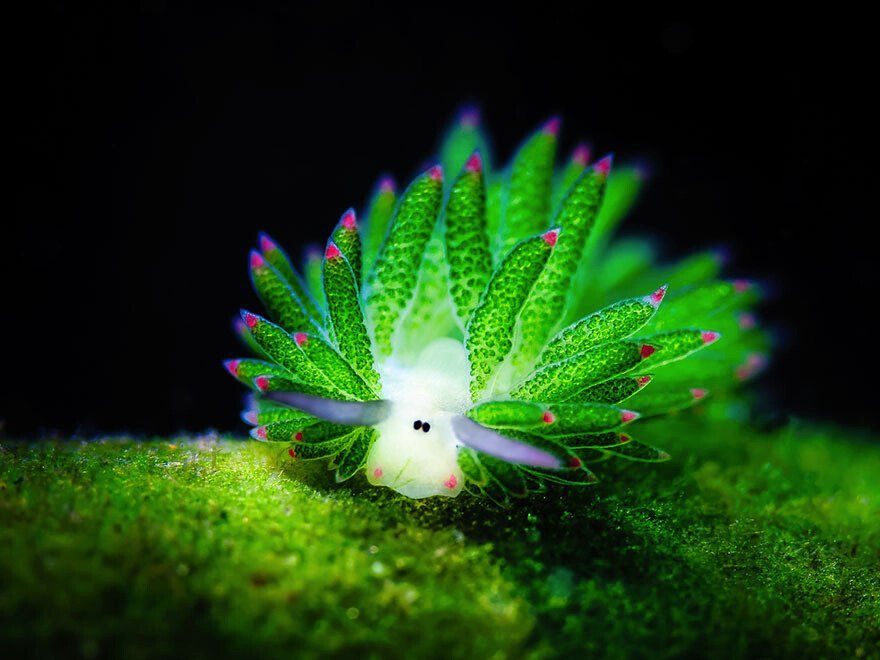
Conclusion
In summary, Leaf Sheep are truly remarkable creatures. Known scientifically as Costasiella kuroshimae, these tiny sea slugs captivate with their unique appearance and fascinating biological traits. Their vibrant, leaf-like structures and ability to perform kleptoplasty make them stand out in the marine world. Found in the warm waters of the Indo-Pacific, they thrive in coral reefs and seagrass beds, contributing to the health of these ecosystems by controlling algae populations.
Leaf Sheep’s surprising and charming nature makes them a symbol of nature’s creativity. Their existence reminds us of the incredible diversity in the ocean and the intricate relationships that sustain marine life. As we learn more about these adorable sea slugs, we gain a deeper appreciation for the delicate balance of marine ecosystems.
It is crucial to consider the conservation of Leaf Sheep and their habitats. Protecting coral reefs and seagrass beds ensures that these fascinating creatures continue to thrive. By supporting marine conservation efforts, visiting marine sanctuaries, and educating ourselves about marine life, we can contribute to preserving the beauty and diversity of our oceans.
Take a moment to appreciate the Leaf Sheep and the wonder they bring to the marine world. Their story is a testament to the extraordinary adaptations and beauty that nature has to offer.
Article source: boredpanda








